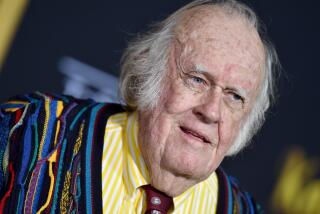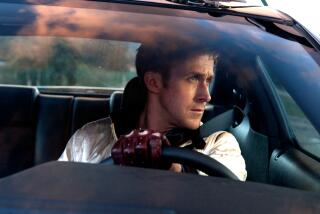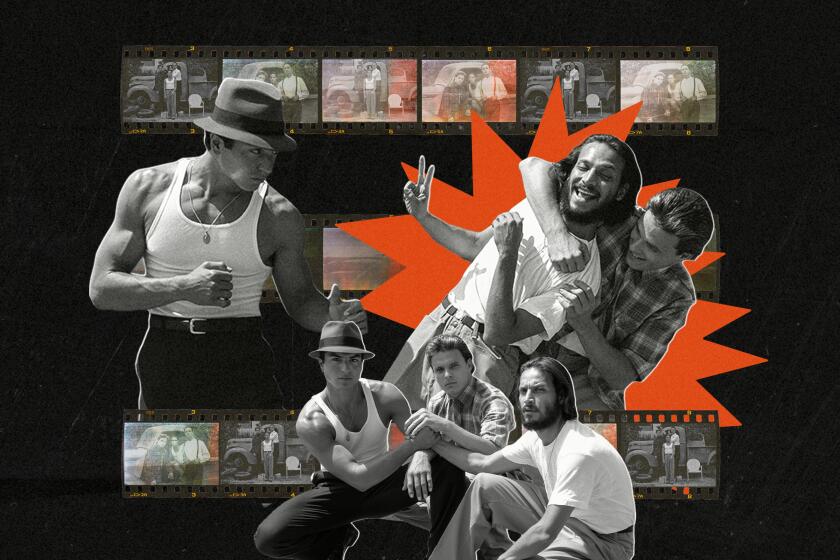‘Furious 7’: Did filmmakers handle Paul Walker’s death aptly?
[Spoiler alert: The below post discusses several plot points in the film “Furious 7,” particularly with regard to the arc of Paul Walker’s Brian O’Conner character.]
There are more difficult challenges in life and the larger world, but when it comes to making a movie, few hurdles compare to the death of an actor midway through production. In addition to the obvious human issues, there’s the looming question of what to do with the film itself. How do you craft a movie around only a partial performance? And how in the storytelling do you deal with the actor’s real-life mortality, which every audience member will be thinking about the minute the actor appears on screen?
That matter has pretty much been haunting “Furious 7” for the last 16 months, ever since star Paul Walker died in a car accident unrelated to the film on Thanksgiving weekend 2013. The filmmakers--director James Wan, producer and all-around-“Furious”-shepherd Neal Moritz and studio Universal Pictures--shut down the Atlanta set for four months to tackle that very issue, convening the screenwriters to figure out both what was possible and in good taste.
Beginning Thursday, when the film opens, audiences will get to see how they did.
The Walker death is, of course, sadly not the first time an actor has died during filming in recent years. Philip Seymour Hoffman still had scenes left in a “Hunger Games: Mockingjay” movie when he died of a drug overdose in February 2014, and Brandon Lee famously was killed in an on-set accident making “The Crow” back in the 1990s.
The most prominent example is the death of “The Dark Knight” star Heath Ledger in January 2008. Though Ledger had actually completed filming, the death of the young Australian actor posed a significant challenge for director Christopher Nolan—Nolan had to take Ledger’s joker character, a heinous villain, and give him an ending befitting a heinous villain while also being sensitive to Ledger’s family and fan base.
But the characters of all three ended up in the film pretty much as the script intended (there was some doubling and effects work for Lee) since all three actors were done or nearly done with shooting their parts.
That wasn’t the case for Walker. The actor still had a large number of days left on “Furious” when he died (slightly more or less than half, depending on how you calculate them). Thus the conundrum: to cut the scenes he shot and reconfigure the film without him—the old TV trick of having another character say he had gone to Hawaii and never speak of him again—or to find some way, by creative reworking or effects sleight of hand (both of which are much easier said than done), to keep him in the movie.
This was of course all further complicated by the shooting schedule. If this were just a matter of writing O’Conner out midway through—which is basically what happens if an actor dies in the middle of a television season, having shot, say, the first 10 episodes in order--that would be one thing. But movies, of course, don’t shoot in sequence, and tent poles like “Furious” really don’t shoot in sequence. Which means you had a situation in which Walker had shot climactic scenes without the events that led up to them, had shot scenes that were the narrative effect without the cause, had shot scenes that don’t make sense without the other scenes. You see the dilemma.
The filmmakers chose to keep him in anyway. And while it’s far riskier, it pays off in spades.
Walker is part of a number of key scenes—including a breathtaking moment when a car Vin Diesel’s Dom character is piloting (literally) travels between several high-rises in Abu Dhabi, hundreds of feet in the air, as Walker’s O’Conner is in the passenger seat. (“Cars don’t fly,” Walker can be heard saying, before they go on to do just that.) In another scene, Walker fights off a villain in hand-to-hand combat on a moving bus, then climbs out of the bus as it dangles off a cliff and clambers its length as it slides down the mountainside into oblivion, jumping at the last instance to survive. It’s the closest thing to a superhero moment outside of a superhero movie that you’ll see.
There is also a more human subplot involving Walker’s character. O’Conner at the start of the film has become a family man, with a young son, and the woman he loves is now pregnant with their second child. In fact, the first time we see Walker in this film it’s in a car, but with a twist, as he’s merely dropping off his son at school in a minivan. Walker slams on the accelerator and then on the brake so he can travel a few feet, a winning little visual joke about how his life has changed from his street racing days.
That family storyline plays throughout the film, and culminates at the movie’s end with Walker’s O’Conner on the beach. After all the death-defying stunts and globetrotting, the character is playing with his wife and child, as Dom and the others reconcile themselves to the fact that he’ll be leaving the team to reunite with his family.
Watching the movie, there’s the occasional feeling that Walker isn’t in the film as much as he would have been had he lived. But “Furious” is, at heart, an ensemble piece, and for the most part the reconfiguration works.
Equally striking is the how the filmmakers blend it all together technically, with the help of Walker’s two brothers as body doubles. There are a couple places where I noticed the stitching—a somewhat abrupt cutaway, a not-quite-right-sounding voice in ADR—but for the most part it’s seamless.
The challenges go well beyond the technical, though. What’s really tricky about building a movie around an actor who’s no longer alive is that it threatens to ruin the fragile magic of movies themselves. Finding an exit for a late actor without taking us out of the film too much--and reminding us of the much more real, much more tragic fact that none of what’s on-screen really matters by comparison--is almost inconceivably tough. It’s creating a cinematic reality that acknowledges the outside world without being overpowered by it.
There was talk that the filmmakers might have O’Conner die onscreen as a means of giving Walker a tribute. That would have been a legitimate way to go. (Nolan found a middle ground, having Ledger’s Joker hang from a great height but then leaving ambiguous what happens after the police show up, guns drawn.) But Wan and company are dealing with a good guy, and they went a different direction, having O’Conner retire in the film and using that retirement as an opportunity for a kind of surrogate memorial.
After the beach scene, Diesel’s Dom is driving away when he comes to an intersection and sees Walker’s O’Conner pulled up in the car alongside him, smiling. Walker almost seems to be smiling at us, offering a final farewell, and Wan takes advantage of the moment to flash back to scenes from other movies, from a young O’Conner as a hot shot street racer to his evolving friendship with Dom as a member of this globetrotting team. Montages from previous films can be a dicey affair, but in this case it’s pitch-perfect, aided by the music choice, a haunting Wiz Khalifa-Charlie Puth original number called “See You Again.”
There’s then a great overhead shot of Diesel and Walker driving off on different roads, the scene and its symbolism landing with maximum power. There are a lot of routes a movie can take with the death of an actor, and it’s remarkable, given all the obstacles in front of them, that the filmmakers here chose exactly the right one.
More to Read
Only good movies
Get the Indie Focus newsletter, Mark Olsen's weekly guide to the world of cinema.
You may occasionally receive promotional content from the Los Angeles Times.







